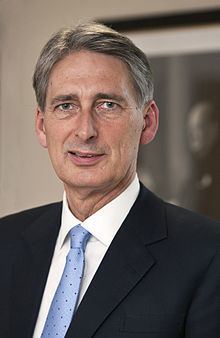Name Philip Hamond | Appointed by David Cameron | |
 | ||
Role Secretary of State for Foreign and Commonwealth Affairs Office Secretary of State for Foreign and Commonwealth Affairs since 2014 Spouse Susan Williams-Walker (m. 1991) Children Amy Hammond, William Hammond, Sophie Hammond Education University College, Oxford, University of Oxford Similar People David Cameron, Michael Fallon, Liam Fox, William Hague, Theresa May Profiles | ||
Major Philip Hamond, DSO and bar, MC (1 May 1883 – 29 July 1953) was a decorated British Army officer who played a prominent part in the downfall of the Rector of Stiffkey. He later collected Norfolk folk songs.
Contents
Military career
He was the eldest son of Charles Annesley and Mary Augusta Hamond, of Twyford Hall, East Dereham. He was commissioned in the 4th (Militia) Battalion of the Norfolk Regiment, and served in the Second Boer War where he was dangerously wounded at the Battle of Rooiwal in early April 1902. Following the battle, he was mentioned in despatches, and created a Companion of the Distinguished Service Order (DSO), the youngest regular officer - at 18 - to that date to earn a DSO. He was also, on 23 April 1902, commissioned as a second lieutenant in the Royal Warwickshire Regiment, nominated by the General Officer Commanding-in-Chief, South Africa. The commission was cancelled, however, when on 7 May 1902 he instead joined a regular battalion of the Norfolk Regiment. Following the end of hostilities, he left Cape Town for England in early June the same year.
He rejoined the Norfolk Regiment in 1914 and won the Military Cross and (as a major), a second DSO. He was later attached to the Tank Corps, commanding F battalion at the Battle of Cambrai (1917). Late on the morning of 20 November 1917, his battalion of twelve Mark IV tanks entered the town of Masnieres. On reaching the St Quentin Canal, it was found that the only bridge had been partially destroyed by the Germans. F22 Flying Fox II was ordered to attempt to cross but the weight of the tank caused the bridge to collapse further. The crew escaped but the tank blocked the progress of other tanks and cavalry units that were attempting to cross the canal in order to exploit the British breakthrough.
In 1918 he was sent to the USA as British Liaison Officer to teach tank warfare at Camp Colt, Pennsylvania with Major Dwight D. Eisenhower. The second award of the DSO was gazetted 3 June 1918.
Family
On 25 August 1909 he married Rita Gladys Ethel Hammond. They moved to Morston Hall in 1914. Between 1925 and 1928, he built Scaldbeck House, Morston almost entirely from reclaimed materials retrieved from local properties. After Rita's death in 1926, he married in 1928 Emily Diana Helen Walton (1899-1982).
Rector of Stiffkey affair
As a prominent landowner and churchwarden, he clashed with the Rector of Stiffkey-with-Morston, Harold Davidson. In 1930, Davidson missed the Remembrance Day service; Hamond was furious and accused the priest of insulting the war dead. His complaints initiated investigations which led to the Rector's trial on charges of immorality and his eventual defrocking in 1932.
Hamond was convicted of assault in 1932. After his last service at Stiffkey, Davidson had called at Hamond's house, apparently to ask for a church key, but Hamond refused to speak to him and told him "Clear out, or I'll kick you out!". Hamond then kicked the Rector off the step, stating at the Magistrates' court that it was "a kick of finality and contempt". Hamond also kicked a companion of Davidson, Clinton Gray-Fisk. He was convicted of two counts of assault and fined 20 shillings on each plus the court costs. Hamond was a magistrate on the Holt bench where the case was heard. Local legend states that Hamond received many letters from sympathisers paying part of his fine and that one enclosed a packet of hobnails with a request that he put those into the soles of his boots for next time.
He lost his sight in later life. Accompanying himself on the melodeon, he would sing folk songs in a rich Norfolk accent.
